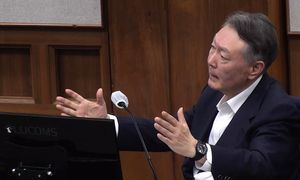
The circadian clock’s necessity at the molecular level in the brain and muscle tissues for muscle function and health has been found throughout the study and has been published in Science.
The circadian rhythm is an internal clock that regulates sleep and wakefulness and is influenced by sunlight and darkness. The circadian rhythm affects various bodily functions from sleep patterns to digestive ability, and is regulated by many clock genes. The disruptions in the circadian rhythm can result in diverse chronic diseases as people get old.
As we age, not only do our sleep-wake patterns change, but our muscle mass also decreases. The research team recently hypothesized that these two phenomena correlate. They proposed that the body’s clock does not entirely regulate the circadian rhythm, but depends on the collaboration of molecular clocks distributed in the brain and muscle tissues.
The research team used a Bmal1 KO mouse model, which suppressed the expression of the clock gene Bmal1 located in the suprachiasmatic nucleus (SCN), a brain area that regulates the circadian rhythm.
Bmal1 KO mice showed abnormal patterns in their activity-inactivity, oxygen consumption, energy expenditure, and glucose and lipid oxidation due to disturbances in their circadian rhythm. By the 26th week, the weight and muscle mass of the KO mice had decreased compared to the 10th week, and signs of damage to the mitochondria in the muscles were also observed.
However, the research team reported that when they restored the expression of the Bmal1 gene in some mice’s muscles and brains, they were able to maintain muscle mass and strength.
The experts further explained that the clocks in the brain and muscles, i.e., the central and peripheral clocks, interact with each other in a complex manner, and this bidirectional system is essential to prevent early muscle aging. In addition, they mentioned that the muscle clock has the unique role of gatekeeping central clock signals to preserve muscle function, emphasizing the importance of skeletal muscle as a metabolically active tissue.
Furthermore, the research team reported that by controlling meal times, the circadian clock functions of the brain and muscles could be restored, protecting the muscle function of the elderly.
They explained that when they subjected aged mice (66-74 weeks old) to time-restricted feeding (or intermittent fasting), the expression of circadian genes in the muscles was restored, preventing muscle function regression.
Meanwhile, experts warned that clinical trials are needed to confirm the effects of the circadian clock on aging. They also pointed out that there is insufficient evidence that intermittent fasting improves elderly health and prevents degenerative diseases.
The research team predicted that continuing research will be needed to grasp the idea of the impact of the circadian rhythm on muscle aging and to investigate the biological mechanisms involved in the interaction between the central and peripheral clocks.










Most Commented